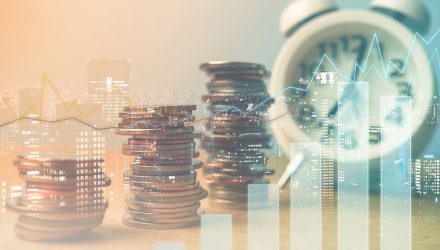By Natalia Gurushina, Chief Economist, Emerging Markets Fixed Income Strategy, VanEck
China’s 5th Plenum reinforced the message of self-reliance and higher quality of growth. Brazil kept its policy rate at the historic low – the fiscal outlook remains a main risk going forward.
The 5th Plenum of China’s Communist Party reinforced the message of self-reliance (especially technological self-sufficiency) and higher quality of growth. One notable goal was lifting per capita GDP to the level of “medium” developed countries by 2035 by boosting domestic demand, supply-side reforms (including small and medium-size enterprises), further opening the economy and digitalization. “Green economy” was another prominent theme. As China gets richer and “greener”, its growth trajectory should be expected to slow down further—mirroring more advanced regional peers like South Korea.
Brazil’s central bank left its policy rate on hold at the historic low of 2% (as expected), but its overall bias was more dovish than expected. In particular, the central bank was willing to look past recent inflation pressures, considering them transitory and believing that long-term inflation expectations remain anchored. The central bank also treated fiscal conditions as unchanged, justifying its dovish forward guidance. Looking forward, the impact of the virus’s second wave on growth and the budget outlook is a major risk for Brazil’s rates. The government has already used most of its fiscal space this year, and the market is unlikely to be forgiving if fiscal reform stalls once again.
Today’s risk-off sentiment is hitting the Turkish currency more than its peers, with the lira blowing past another important level of 8.30 vs. U.S. dollar. Geopolitical complications—including potential anti-dumping measures by the EU—is one possible explanation. On a more fundamental level, the country’s policy mix is considered unsustainable, and suggestions that the central bank is once again using its (already depleted) reserves for interventions reinforce this view.
Originally published by VanEck, 10/29/20
IMPORTANT DEFINITIONS & DISCLOSURES
PMI – Purchasing Managers’ Index: economic indicators derived from monthly surveys of private sector companies; ISM – Institute for Supply Management PMI: ISM releases an index based on more than 400 purchasing and supply managers surveys; both in the manufacturing and non-manufacturing industries; CPI – Consumer Price Index: an index of the variation in prices paid by typical consumers for retail goods and other items; PPI – Producer Price Index: a family of indexes that measures the average change in selling prices received by domestic producers of goods and services over time; PCE inflation – Personal Consumption Expenditures Price Index: one measure of U.S. inflation, tracking the change in prices of goods and services purchased by consumers throughout the economy; MSCI – Morgan Stanley Capital International: an American provider of equity, fixed income, hedge fund stock market indexes, and equity portfolio analysis tools; VIX – CBOE Volatility Index: an index created by the Chicago Board Options Exchange (CBOE), which shows the market’s expectation of 30-day volatility. It is constructed using the implied volatilities on S&P 500 index options.; GBI-EM – JP Morgan’s Government Bond Index – Emerging Markets: comprehensive emerging market debt benchmarks that track local currency bonds issued by Emerging market governments.; EMBI – JP Morgan’s Emerging Market Bond Index: JP Morgan’s index of dollar-denominated sovereign bonds issued by a selection of emerging market countries; EMBIG – JP Morgan’s Emerging Market Bond Index Global: tracks total returns for traded external debt instruments in emerging markets.
The information presented does not involve the rendering of personalized investment, financial, legal, or tax advice. This is not an offer to buy or sell, or a solicitation of any offer to buy or sell any of the securities mentioned herein. Certain statements contained herein may constitute projections, forecasts and other forward looking statements, which do not reflect actual results. Certain information may be provided by third-party sources and, although believed to be reliable, it has not been independently verified and its accuracy or completeness cannot be guaranteed. Any opinions, projections, forecasts, and forward-looking statements presented herein are valid as the date of this communication and are subject to change.
Investing in international markets carries risks such as currency fluctuation, regulatory risks, economic and political instability. Emerging markets involve heightened risks related to the same factors as well as increased volatility, lower trading volume, and less liquidity. Emerging markets can have greater custodial and operational risks, and less developed legal and accounting systems than developed markets.
All investing is subject to risk, including the possible loss of the money you invest. As with any investment strategy, there is no guarantee that investment objectives will be met and investors may lose money. Diversification does not ensure a profit or protect against a loss in a declining market. Past performance is no guarantee of future performance.







